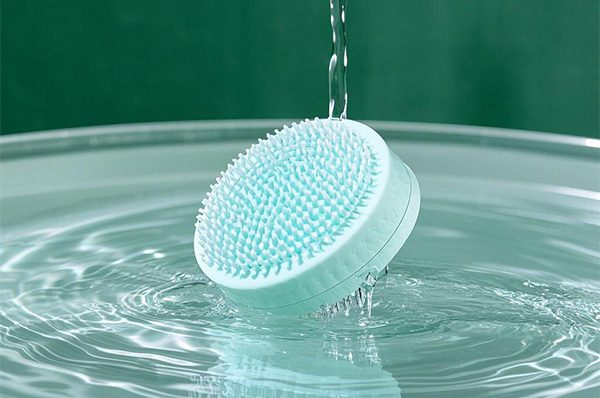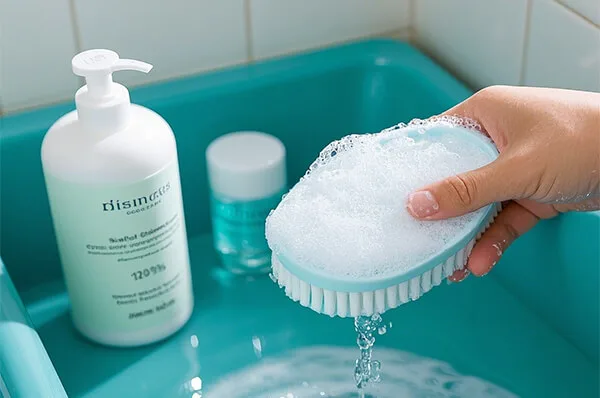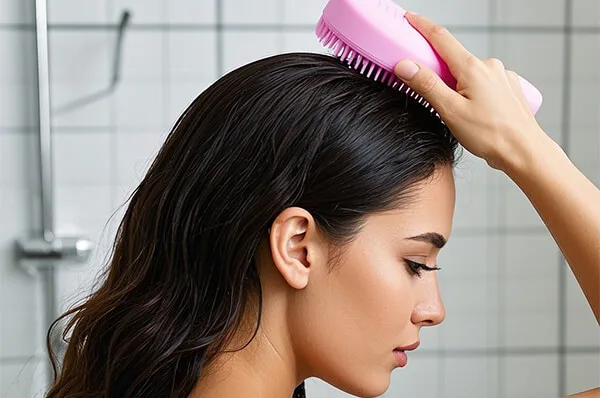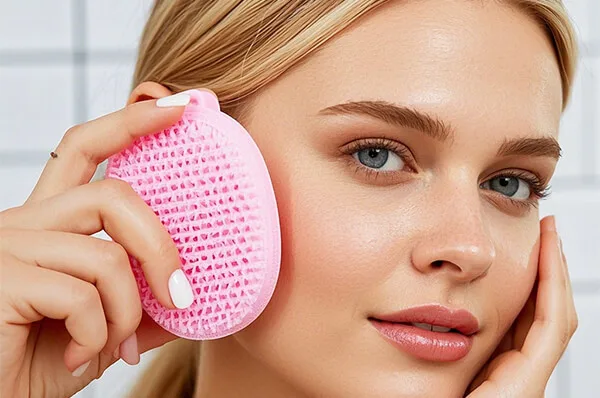- Have any questions?
- +86 19574832024
- admin@beaut-lohas.com
In the realm of hair care, the use of shampoo brushes has piqued the interest of many, and the question of whether they can be utilized on dry hair is a topic worth delving into. Moreover, when it comes to shampoo brushes, silicone shampoo brushes have their own unique set of advantages that enhance the overall experience, especially when considering dry hair application.
The Function and Design of a Shampoo Brush
Shampoo brushes, in general, are crafted with the intention of improving the hair cleansing and scalp massaging process. They usually come with bristles that are designed to be gentle yet effective in distributing products like shampoo and conditioner evenly. When it’s a silicone shampoo brush, its design takes on additional benefits. Silicone is a soft, flexible, and durable material that can be molded into various shapes and textures. The bristles of a silicone shampoo brush are often more resilient than those made of some other materials, yet they maintain a soft touch on the scalp and hair.
Using a Shampoo Brush on Dry Hair: Potential Benefits
Scalp Exfoliation
One of the key advantages of using a shampoo brush on dry hair is scalp exfoliation. Dry hair and scalp tend to accumulate dead skin cells, sebum, and product residue over time. A silicone shampoo brush can be particularly effective in this regard. The soft yet firm bristles of the silicone brush can gently loosen and remove these particles when used on dry hair. The flexibility of silicone allows the bristles to conform to the contours of the scalp, reaching into all the nooks and crannies to ensure a thorough exfoliation. By massaging the scalp in circular motions with the brush, it also stimulates blood flow to the hair follicles, which is crucial for promoting healthy hair growth. Just like a dry body brush exfoliates the skin, the silicone shampoo brush plays a similar role for the scalp but with added comfort due to its smooth texture.
Relaxation and Stress Relief
The act of massaging the scalp with a shampoo brush on dry hair offers a relaxing experience. A silicone shampoo brush enhances this relaxation factor. The smooth surface of the silicone bristles feels pleasant against the scalp, making the massage even more soothing. Many people find the gentle pressure and movement of the bristles to be a great way to relieve stress, similar to getting a professional scalp massage at a spa. In our hectic lives, taking a few minutes to use the silicone shampoo brush on dry hair before showering can help reduce stress levels and ease tension headaches. It can be an integral part of a self-care routine, allowing one to unwind and prepare both the mind and body for the day ahead or for a good night’s sleep.
Pre-Shampoo Preparation
Using the brush on dry hair before wetting it for shampooing can enhance the effectiveness of the subsequent wash. A silicone shampoo brush is especially good at this pre-shampoo step. It can effectively loosen the dirt and debris on the scalp and along the hair strands beforehand. The unique texture of the silicone bristles helps in dislodging any stubborn build-up, enabling the shampoo to penetrate better and clean the hair more thoroughly when it’s finally applied. This results in cleaner, more refreshed hair overall.
The Advantages of Silicone Shampoo Brushes
Hygienic and Easy to Clean
Silicone is a non-porous material, which means that it doesn’t absorb moisture, oils, or other substances like some other brush materials might. This makes silicone shampoo brushes extremely hygienic. After using it on dry hair, it’s a breeze to clean. You can simply rinse it under warm water, and any loose particles or debris will wash away easily. You can also use a mild soap or shampoo to give it a more thorough cleaning from time to time, and it will dry quickly without retaining any unpleasant odors or bacteria. This ease of cleaning ensures that the brush remains in good condition and ready for repeated use, maintaining its effectiveness for your dry hair care routine.
Durability
Silicone is known for its durability. A silicone shampoo brush can withstand regular use without wearing down easily. The bristles won’t fray or break off like those of some cheaper or less durable materials. Whether you’re using it on dry hair daily or a few times a week, you can expect the silicone brush to maintain its shape and functionality over an extended period. This makes it a cost-effective investment in your hair care arsenal, as you won’t have to replace it frequently.
Gentle on the Scalp and Hair
Despite its durability, silicone remains gentle on the scalp and hair. The softness of the silicone bristles ensures that they won’t cause scratches or irritation to the delicate scalp skin. When used on dry hair, which is more prone to damage than wet hair, the silicone brush minimizes the risk of pulling or breaking the hair strands. The smooth edges of the bristles glide through the hair smoothly, even if there are some minor tangles, reducing the likelihood of causing harm during the exfoliation and massaging process.
Versatility in Temperature Resistance
Silicone has excellent temperature resistance properties. Whether you’re in a cold environment or a warm one, the silicone shampoo brush will perform consistently. It won’t become brittle in cold temperatures or overly soft and lose its shape in hot conditions. This means that you can use it comfortably regardless of the climate or the temperature in your bathroom, further adding to its convenience and usability when it comes to using it on dry hair at any time.
Potential Drawbacks and Precautions
Hair Breakage
Even with the gentleness of a silicone shampoo brush, dry hair is still more brittle compared to wet hair. There is still a risk of causing hair breakage if excessive force is applied or if the bristles catch on knots or tangles in the hair. It’s essential to be extremely gentle when using the brush on dry hair and to start from the ends and work your way up to the roots slowly. Combing through the hair with a wide-toothed comb to remove any major tangles before using the silicone shampoo brush can also help minimize the risk of breakage.
Static and Frizz
Using a shampoo brush on dry hair, including a silicone one, can sometimes lead to the creation of static electricity. As the bristles move through the dry strands, they can cause the hair to become charged, resulting in static and frizz. To combat this, you can spritz a small amount of a leave-in conditioner or a hair mist formulated to reduce static onto the hair before using the brush. This will help keep the hair smooth and manageable.
Over-Stimulation of the Scalp
While scalp stimulation is beneficial to an extent, overdoing it with the shampoo brush on dry hair can cause irritation. The scalp has a delicate balance of oils and bacteria, and excessive rubbing or massaging can disrupt this balance. It’s advisable to limit the use of the brush on dry hair to a few minutes at a time and not to use it too vigorously.
Best Practices for Using a Silicone Shampoo Brush on Dry Hair
If you choose to use a silicone shampoo brush on dry hair, here are some tips to optimize its benefits while minimizing potential issues. First, select a high-quality silicone shampoo brush with well-designed bristles that are soft yet firm enough to do the job effectively. Second, before using the brush, gently comb through your dry hair with your fingers or a wide-toothed comb to detangle it as much as possible. Then, place the silicone shampoo brush on the scalp and start making slow, circular motions, gradually covering the entire scalp area. Apply very light pressure and be mindful of any areas where the hair might be more prone to tangling or breakage. After using the brush for a short while, you can then proceed to wet your hair and continue with your regular shampooing and conditioning routine.
In conclusion, using a silicone shampoo brush on dry hair can bring multiple advantages such as effective scalp exfoliation, relaxation, and better pre-shampoo preparation. Its unique properties like being hygienic, durable, and gentle on the scalp and hair make it a great choice. However, it’s important to be aware of the potential risks like hair breakage, static, and scalp irritation and take appropriate measures to mitigate them. By following the best practices, you can make the most of the silicone shampoo brush and maintain healthy and beautiful hair while incorporating this useful tool into your dry hair care routine.




